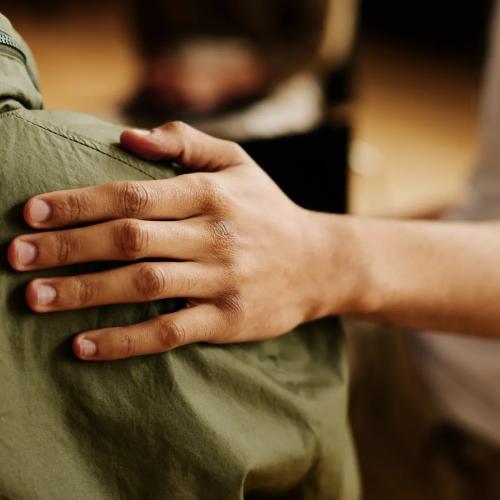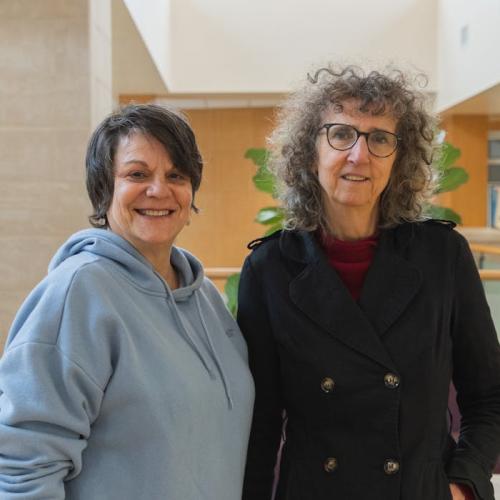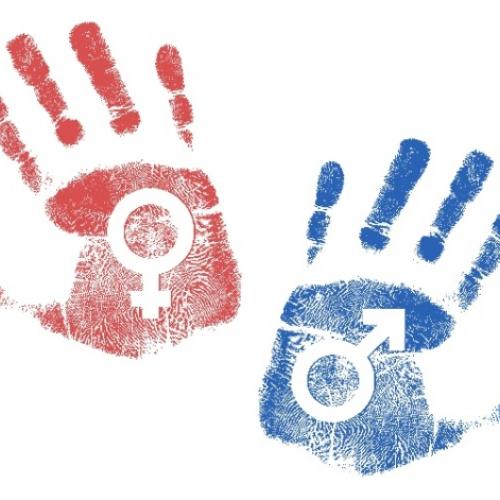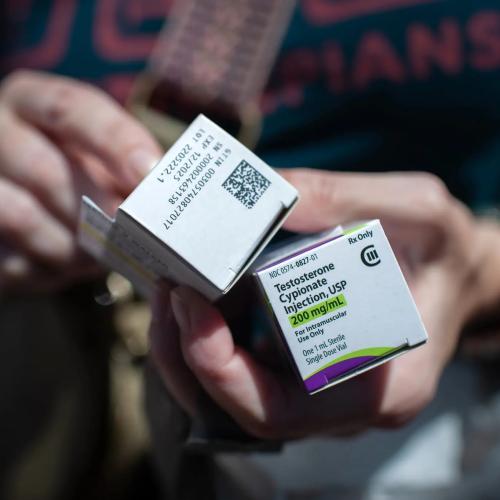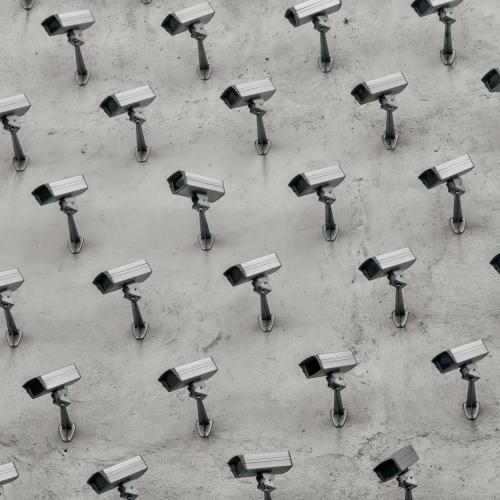Inspiring: Healing Our Relationships Media Articles
We believe in the creative, redemptive, and collaborative potential of humanity. Below are key excerpts of inspiring news articles on healing social division and polarization. If any link fails to function, a paywall blocks full access, or the article is no longer available, try these digital tools.
For further exploration, delve into our Inspiration Center.
Forgiveness is a principle promoted by just about every faith tradition. Even neuroscientists agree on its mental and physical benefits — from lowered risk of heart attacks to improved sleep. Twenty years ago, UK-based journalist Marina Cantacuzino launched the Forgiveness Project, a collection of stories from survivors and victims of crime and conflict, as well as perpetrators who reshaped their aggression into a force for peace. Cantacuzino documented real-life stories of seemingly supernatural examples of forgiveness. A Canadian woman who forgave her husband's killer. An Israeli filmmaker wounded in a terrorist attack. A Minneapolis mother who grew to love the person who murdered her only child. But even Cantacuzino admits it can seem difficult to relate to those who forgive the seemingly unforgivable. Are they morally superior? Extremely religious? Some are, but they are more likely to share the traits of curiosity, empathy and a flexible viewpoint. It feels like those characteristics are harder to come by today. The cacophony of "if you're not with us, you're against us" has divided families and entire communities. One's ability to recognize the pain on both sides of the Israel-Hamas war can evoke outrage, for example. But Cantacuzino continues to support discussions that bring together Israeli and Palestinian victims of the conflict, stories that require people to embrace complexity and contradiction while honoring the "sanctity of every human life ... Stories stick, whereas facts fade," she says. The Forgiveness Project's exhibit has now journeyed to 17 countries, including Kenya, Australia and Israel.
Note: Explore Cantacuzino's latest inspiring book, Forgiveness: An Exploration, which delves into the politics, mechanics and psychology of forgiveness. Explore more positive stories that reveal the power of healing social division and polarization.
Since the late 1970s, psychologists have measured empathy by asking millions of people how much they agreed with statements such as “I feel tender, concerned feelings for people less fortunate than me.” In 2011, a landmark study led by researcher Sara Konrath examined the trends in those surveys. The analysis revealed that American empathy had plummeted: The average US college student in 2009 reported feeling less empathic than 75 percent of students three decades earlier. A few months ago, [Konrath] and her colleagues published an update to their work: They found that empathy among young Americans is rebounding, reaching levels indistinguishable from the highs of the 1970s. Our biased minds tempt us to see the worst in people. The empathy decline reported 13 years ago fit that narrative and went viral. This decline is almost certainly an illusion. In other surveys, people reported on kindness and morality as they actually experience it — for instance, how they were treated by strangers, coworkers, and friends. Answers to these questions remained steady over the years. As with the decline, we might grasp for explanations for this rise. One possibility is collective suffering. Hard times can bring people together. In her beautiful book, A Paradise Built in Hell, Rebecca Solnit chronicles disasters including San Francisco’s 1906 and 1989 earthquakes, Hurricane Katrina, and 9/11. In the wake of these catastrophes, kindness ticked up, strangers stepping over lines of race and class to help one another.
Note: Explore more positive stories like this in our comprehensive inspiring news articles archive focused on solutions and bridging divides.
They say it takes a village to raise a child. Centered on that concept of communal flourishing, a dementia care village in England has incorporated a day nursery for small children—bringing together young and old for learning and sharing. Stimulation, learning, and fun—these are all activities that are known to delay the progression of dementia, and what better way to add these critical elements of life to a daily regimen than to let a flock of preschoolers do it? Belong is a nonprofit operator of senior homes, specializing in dementia care. This is the first to integrate children. The pioneering facility supports older people to live their lives independently, with access to several shops and services on site. The UK charity Ready Generations partnered with Belong to run the village’s day nursery. Children feature in the daily life of residents and tenants, enjoying experiences together including shared mealtimes, stories, arts and crafts, and exercise. Centered around a vibrant hub of amenities, including a bistro, hair salon, and specialist exercise studio, the site is open to the public, creating a bustling environment with customers from the local community. Similar projects have been pioneered in America as well. The Intergenerational Learning Center at Mount St. Vincent nursing home in Seattle opened its doors to the oldest—and the youngest—in 2015. The 400 adults in that assisted-living center join the kids in daily activities from music and dancing to storytelling and just plain visiting.
Note: Explore more positive stories like this in our comprehensive inspiring news articles archive focused on solutions and bridging divides.
On the outskirts of Austin, Texas, what began as a fringe experiment has quickly become central to the city’s efforts to reduce homelessness. To Justin Tyler Jr., it is home. Mr. Tyler, 41, lives in Community First! Village, which aims to be a model of permanent affordable housing for people who are chronically homeless. In the fall of 2022, he joined nearly 400 residents of the village, moving into one of its typical digs: a 200-square-foot, one-room tiny house furnished with a kitchenette, a bed and a recliner. Eclectic tiny homes are clustered around shared outdoor kitchens, and neat rows of recreational vehicles and manufactured homes line looping cul-de-sacs. There are chicken coops, two vegetable gardens, a convenience store ... art and jewelry studios, a medical clinic and a chapel. In the next few years, Community First is poised to grow to nearly 2,000 homes across three locations, which would make it by far the nation’s largest project of this kind, big enough to permanently house about half of Austin’s chronically homeless population. Many residents have jobs in the village, created to offer residents flexible opportunities to earn some income. Last year, they earned a combined $1.5 million working as gardeners, landscapers, custodians, artists, jewelry makers and more. Ute Dittemer, 66, faced a daily struggle for survival during a decade on the streets before moving into Community First five years ago with her husband. Now she supports herself by painting and molding figures out of clay at the village art house. A few years ago, a clay chess set she made sold for $10,000 at an auction. She used the money to buy her first car.
Note: Explore more positive stories like this in our comprehensive inspiring news articles archive focused on solutions and bridging divides.
When Ben was 11 years old, his parents noticed that his grades dropped. He stopped talking about school. “These are all typical signs there might be a bullying problem,” says Bettina Dénervaud, co-founder of the Swiss initiative Hilfe bei Mobbing, which translates as “Help with Bullying.” She and her two colleagues use a 30-point checklist to evaluate if there is an underlying issue of mental, emotional and physical bullying or something else — maybe a conflict, which might require conflict resolution. Instead of being punished, the bullies are invited to help the bullied student. In a 2008 study that looked at 220 bullying cases, the No-Blame Approach was successful in 192, or 87 percent, of the cases. In most schools that were evaluated, it only took two or three weeks for the bullying to stop. The second step is the core of the No-Blame Approach. It includes calling six to eight children that the teacher chooses into a meeting that is set up as a social get together: in Ben’s case, three of the bullies, three students Ben felt he could count on and two “neutral” tag-alongs. The children are not told the meeting is about Ben. “I have a problem,” the teacher might start the discussion. “I noticed some students don’t feel supported in class. What can we do to help them, for instance, Ben?” The third step includes follow-ups with all students, including Ben, within the next few weeks. If necessary, the intervention might be repeated or tweaked. "The goal is to change the social dynamic," Dénervaud says. Younger children often start crying in these meetings, Dénervaud has observed, “because they realize for the first time what has been happening and how unhappy the bullying victim has been."
Note: Explore more positive stories like this in our comprehensive inspiring news articles archive focused on solutions and bridging divides.
In 2012, according to FBI data, 2,774 violent crimes were reported to the Flint Police Department. In 2022, 985 were reported. Like other “legacy cities” that have experienced significant economic decline and population loss, Flint, [Michigan] is still struggling. But now, through the Genesee County Land Bank’s Clean & Green program, Ishmel and hundreds of other residents have been mowing vacant lots. Greening projects like these maintain abandoned spaces, either by mowing them or converting them into gardens and parks. But these projects don’t just make the neighborhood feel safer. Researchers who have been studying the effects of greening in Flint; Philadelphia; Youngstown, Ohio; and other legacy cities have shown repeatedly that it actually reduces violent crime. “It is one of the most consistent findings I’ve ever had in my 34-year career of doing research,” says Marc A. Zimmerman, professor at the University of Michigan School of Public Health. A review of 45 papers found that the presence of green spaces, including parks and trees, reduces crime in urban areas. In Flint, Zimmerman and his colleagues compared streets where community members maintained vacant lots through Clean & Green with streets where vacant lots were left alone, over five years. The maintained ones had almost 40 percent fewer assaults and violent crimes. One study found that while simply maintaining vacant lots reduced burglaries, turning them into gardens reduced assaults.
Note: Explore more positive stories like this in our comprehensive inspiring news articles archive focused on solutions and bridging divides.
Brandon, Jackie and Julie meet for dinner every Thursday, sitting at their regular table. As they leave, there’s no check to pay for this generous meal. The pop-up cafe at a church hall in Chelmsford, England is one of 80 held across the country throughout the week. They’re an initiative of FoodCycle, the UK’s largest community dining organization, which turns produce that supermarkets would otherwise throw out into a free meal for anyone who wants to attend. In 2022, FoodCycle’s pop-up cafes served nearly 500,000 meals to 62 communities across the UK, saving 209 tonnes of food from going to waste. Forty-three percent of people who attend FoodCycle meals, like Jackie and Julie, live on their own, with 68 percent of them feeling lonely, according to a survey of 910 FoodCycle guests in 2022. Loneliness is considered to be a significant mental and public health issue in the country, affecting over half the population, with the Mental Health Foundation linking it to depression and declining physical health. Sixty-eight percent of FoodCycle guests worry about affording food, and 92 percent are concerned about the increasing price of food, to the extent that 75 percent regularly skip meals. “These issues are intertwined and interlinked. We know there’s a correlation between people who are facing food poverty, and feeling isolated and disconnected from their communities,” says Sophie Tebbetts, FoodCycle’s head of programs and incoming CEO.
Note: Explore more positive stories like this in our comprehensive inspiring news articles archive focused on solutions and bridging divides.
On the snowy shore of the northern Swedish city of Luleå, bathers are lowering themselves into a rectangular hole in the frozen seawater. “It’s like a happiness rush afterwards,” says Katariina Yliperttula, 44, who is taking a dip before work. While many have their own hobbies that keep them going through the cold dark winter months here – ice swimming, cross-country skiing, walking on the “ice road” out into the archipelago – one thing remains a problem: loneliness. In an attempt to counter that, authorities in Luleå have launched a campaign to ease that social isolation, ever so slightly, by encouraging people to say hello to one another. The Säg hej! (say hello!) campaign says it aims to create a friendlier city by nudging people towards small but significant social interactions. Adverts are running on buses, and workshops are being held in schools. Recent research found that among 16- to 29-year-olds, 45% of people in Luleå were experiencing problems as a result of loneliness. Åsa Koski, who works for Luleå municipality, came up with the idea for the campaign. She wants the city, which is undergoing a period of rapid growth as it tries to attract tens of thousands of new people to work in “green” industry ... to not grow more atomised as a result. “We don’t just want that Luleå is going to grow as a city; we want Luleå to be a pleasant and safe and friendly city,” says Koski. Being greeted by strangers makes people feel “more seen and a bit more like you belong”, she adds.
Note: Explore more positive stories like this in our comprehensive inspiring news articles archive focused on solutions and bridging divides.
Tim Phillips, a veteran conflict-resolution expert, helped negotiate some of the most fraught conflicts in modern history — ceasefires of religious clashes in Northern Ireland and the establishment of what became South Africa's Truth and Reconciliation Commission after apartheid. Defusing an escalating situation ... first requires releasing a brain hijacked by defensive emotion. Phillips says it means saying to your opponent, for example: "I understand how important this is to you; I understand this is core to your identity and your community, and I respect your sacred values." It means reflecting your opponent's humanity back to them. A similar approach, he says, can help reduce toxic polarization. It's effective because in the heat of argument, people tend to demonize one another; counteracting that can neutralize assumptions of negative intent. Phillips says he's seen people emotionally disarm the opposition in a disagreement simply by recognizing their humanity. It can bring together fierce adversaries, and change history. Shirley Chisholm, the first Black congresswoman in the U.S., was battling for the Democratic presidential nomination with political rival ... George Wallace, a fierce segregationist. After he was shot in an attempted assassination, Chisholm visited him in the hospital and prayed at his bedside. "Wallace's daughter later said that that gesture of compassion completely changed her father," Phillips says. Wallace reportedly wept openly, and shifted his stance on racial segregation.
Note: Explore more positive stories like this in our comprehensive inspiring news articles archive focused on solutions and bridging divides.
[Loretta] Ross has worked at the forefront of the movement for reproductive justice. But recently she has become better known for championing “call-in culture,” a philosophy that approaches someone’s wrongdoing with accountability and, most importantly, love. In the summer of 2020 ... I felt myself crumbling. I called out snide comments by alumni of my college about Black Lives Matter protests, demanded people boycott the college newspaper ... and used Twitter to call out the behavior of fellow students. Each tactic left no room for discussion. Calling in, by contrast, asks us to always be the bigger person, even in the most hateful and painful situations. I ask Ross: Whose well-being are we prioritizing here? And why isn’t it our own? Ross tells me about another Black woman who asked the same question. “I’m confused,” Ross recalls the woman saying. “I don’t want to fall into the stereotype of the angry Black woman. But I feel like if I embrace the calling-in strategies you’re talking about, then I’m ... giving a pass to all this injustice. What should I do?” Ross responds with a question of her own: “Well, who are you inside? Go deep inside and find out who you are. What’s the emotion that you feel is true to you?” “Inside, I feel like I’m filled with love,” the woman replies. “Then, why aren’t you leading with your authentic self?” Ross asks her. Accountability and love are not mutually exclusive, Ross explains.
Note: Smith College Professor and civil rights activist Loretta Ross worked with Ku Klux Klan members and practiced restorative justice with incarcerated men convicted or raping and murdering women. Watch Loretta Ross's powerful Ted Talk on simple tools to help shift our culture from fighting each other to working together in the face of polarizing social issues. Explore more positive stories about healing social division and polarization.
Social media platforms have become an integral part of our lives, but they also pose significant challenges for our society. From spreading misinformation and hate speech to undermining democracy and privacy, social media can have negative impacts on the public good. How can we harness the power of social media for positive purposes, such as civic engagement, social justice, and education? One possible solution is to create a new kind of social media platform that is designed to serve the public interest, not the profit motive. This platform would be owned and governed by its users, who would have a say in how it operates and what content it promotes. Such a platform may sound utopian, but it is not impossible. In fact, there are already some examples of social media platforms that are trying to achieve these goals, such as Mastodon, Diaspora, and Aether. These platforms are based on the principles of decentralization, federation, and peer-to-peer communication, which allow users to have more control and autonomy over their online interactions. Civic Works ... is an emerging social networking platform that provides a more democratic, inclusive, and responsible online space for everyone. It is built on the idea that social media can be a force for good when the objective is not subverted by advertisers, marketers, or shadowy political operatives. It is a platform that inspires people to become active citizens, through civic, political, economic, and/or educational actions.
Note: The social media platform PeakD is censorship-proof and is governed by network operators who are elected by the community. Explore more positive stories like this in our comprehensive inspiring news articles archive focused on solutions and bridging divides.
This past summer more than 300 high school graduates signed up for a unique student exchange program. Unlike the well-known foreign exchange model ... this program gives students the opportunity to soak in a brand-new culture without ever leaving the country. It's called the American Exchange Project, or AEP for short, co-founded by 29-year-old David McCullough III. "We fund kids to spend a week in the summer after senior year in an American town that is politically and socio-economically and culturally very different from the one that they're growing up in," McCullough said. One student, Alex, said, "My groups of friends are not really close to each other, so I feel like I've actually bonded with you guys more than I have with my own friends." One girl from South Dakota said, "I've never been a part of a community where ... I'm not the minority, I'm not the odd one out. So, this is very much an experience that I really appreciate so much." McCullough hopes to offer the program to a million students a year by decade's end, and all free of charge, thanks to big name donors, including the likes of Steven Spielberg. "I think this all ought to be as typical to the American high school experience as the prom," McCullough said. There's that old adage about walking a mile in someone else's shoes; the problem is, you can't see the person face-to-face if you're walking away. What David McCullough is hoping is the next generation will turn around, look those they differ with in the eye, and just talk.
Note: Explore more positive stories like this in our comprehensive inspiring news articles archive focused on solutions and bridging divides.
‘Contact theory’ has been shown to lead to harmony and an enlarged sense of a common good, even when there are limited resources and competing interests. It's a theory that suggests that the more contact that people have, the more willing they are to rehumanize and understand each other, even across their personal differences. It originated in the 50s with the work of Gordon Allport. After World War II, he asked himself, how can we reduce conflict in society? He put forward that, under the right conditions, having positive experiences with people of another social, ethnic, cultural, religious backgrounds could improve our tolerance and reduce our prejudice against them. 50 years later, the vast majority of studies show that it does work. If you talk about moving beyond past violence and having a harmonious society, one of the biggest things that could hamper having these contact experiences [is] the homophilia principle, where you go with your own group. It's easy to avoid having experiences with other groups. But once we do, they're very beneficial. We spoke with someone named Ali Abu Awad [who] is a Palestinian activist. He said he never had contact with an Israeli ... until he was in his 30s. And they were brought together into a group. This Israeli woman was crying, and he was crying. They were both grieving the loss of family members of the conflict. That moment of contact actually changed the whole direction of his life because he realized that this Israeli woman was human like he was. He ended up becoming an activist working toward a solution that humanizes Israelis and humanizes Palestinians at the same time.
Note: This summary is a transcript of an interview with Jasper Van Assche, professor at the University of Ghent in Belgium. Explore more positive stories like this in our comprehensive inspiring news articles archive focused on solutions and bridging divides.
Ray, a man in his 50s, used to live in an emergency homeless shelter in Vancouver, Canada. Then he participated in a study that changed his life. The newly published, peer reviewed PNAS study, conducted by the charity Foundations for Social Change in partnership with the University of British Columbia, was fairly simple. It identified 50 people in the Vancouver area who had become homeless in the past two years. In spring 2018, it gave them each one lump sum of $7,500 (in Canadian dollars). And it told them to do whatever they wanted with the cash. Over the next year, the study followed up with the recipients periodically, asking how they were spending the money and what was happening in their lives. The recipients of the cash transfers did not increase spending on drugs, tobacco, and alcohol, but did increase spending on food, clothes, and rent. What’s more, they moved into stable housing faster and saved enough money to maintain financial security over the year of follow-up. “Counter to really harmful stereotypes, we saw that people made wise financial choices,” Claire Williams, the CEO of Foundations for Social Change, [said]. What’s more ... giving out the cash transfers in the Vancouver area actually saved the broader society money. Enabling 50 people to move into housing faster saved the shelter system $8,277 per person over the year, for a total savings of $413,850. That’s more than the value of the cash transfers, which means the transfers pay for themselves.
Note: Explore more positive stories like this in our comprehensive inspiring news articles archive focused on solutions and bridging divides.
By the time the sun casts its first beams on war-ravaged Yemen, hundreds of men will have taken their positions across the park, and the workout begins. Enthusiastic chants of “Ahsan Fareek”, or “Best Team”, boom across the park as members of this daily, free, open-to-all sports club begin a set of 33 exercises designed to work the whole body. For the next hour, they temporarily put aside the stressors they’ve accumulated from the devastating eight-year civil war that has claimed 377,000 lives, touching their toes, standing on one leg and reaching for the sky. By 6.30am the crowd disperses, and everyone goes about their day, rejuvenated and energized, ready to meet again the following morning. “It is a sports club for everyone, but it’s particularly vital for the elderly, who suffer from illnesses and anxiety and for whom treatment is unaffordable,” says Najy Abu Hatem, co-founder of the initiative. “Being part of Best Team lifts their morale and gives them free exercise classes in a healthy and social setting.” In a country of 33 million people, there are only 59 psychiatrists – one psychiatrist per 500,000 people – and the total number of mental health workers is just 304. Although Best Team can hardly tackle this huge, ongoing mental health crisis, the twin benefits it provides of camaraderie and physical exercise – under the guise of a more socially acceptable men’s sports club – is nonetheless quietly improving people’s mental wellbeing across the capital and beyond.
Note: Explore more positive stories like this in our comprehensive inspiring news articles archive focused on solutions and bridging divides.
A legacy of poverty, genocide and dictatorship left Zimbabwe struggling with an epidemic of depression, colloquially known as kufungisisa, or ‘thinking too much’. Known as ‘gogos’ (elder women) or ‘ambuya utano’ (community grannies), these Zimbabwean community health workers (CHWs) have a record in treating mild to moderate anxiety and depression that beats many traditional talking therapies and pharmacological interventions. Meet the Friendship Bench grandmothers of Zimbabwe. Founded in 2007, the Friendship Bench project has treated 280,000 people in its 16 years of existence, in 70 communities across Zimbabwe and at spin-off projects in Malawi, Kenya and most recently Zanzibar and Vietnam. In 2024 it will arrive in London, with a series of Friendship Benches set to be installed in the city’s most marginalised communities. “Whether it’s London, New York or Zimbabwe, everywhere the issues are similar,” Friendship Bench founder, Harare-based psychiatrist Dr Dixon Chibanda tells Positive News. “There are issues related to loneliness, access to care, and to just being able to know that what you’re experiencing – whether you call it stress or depression or anxiety – is treatable.” Most of the therapists are older women, who are traditionally turned to for counsel in Zimbabwean culture. The women are trained in the basics of cognitive behavioural therapy [CBT] and allocated a park bench in their communities.
Note: Explore more positive stories like this in our comprehensive inspiring news articles archive focused on solutions and bridging divides.
Edgard Gouveia Jr., 58, says the key to solving the world's problems is games. "I use games and narrative to mobilize crowds," says the Brazilian game inventor and co-founder of Livelab. He's worked with schools, companies, government offices and slums. "Games that can make a whole town, a whole city or even a whole country play together." And now he's developing a global game called "Jornada X" whose goal is to get kids and teenagers to save nothing less than all life on the planet. Through games and playful activities, we create a field of trust. When you create abundance of connection, abundance of possibility, people sense it right away. It doesn't matter if for 30 or 40 years they were living in scarcity. By belonging to a group that we love and that's doing good in the world – these are ways of energizing our collective power, our collective meaning. When you do some good, you feel like you have an identity. [Jornada X] starts with young people. They receive a call that's like a Matrix video that says, "Humanity isn't doing well. Society is violent and nature is dying. But you are one of a group of special kids with superpowers – things like love, helping others, strength, and friendship. As soon as they sign up, the team starts to receive missions. We might say, "Look at your neighborhood. What's wrong?" By the end of seven weeks, they have to find a solution ... Kids play war games all the time. They collaborate to kill people. It's not that they like death, but they want to have this kind of adrenaline. What could be more exciting? My answer is saving the planet in a way that adults haven't been able to."
Note: The latest US Air Force recruitment tool is a video game that allows players to receive in-game medals and achievements for drone bombing Iraqis and Afghans. What world do we want our youth to live in? Explore more positive stories like this in our inspiring news articles archive, which aims to inspire each of us to make a difference.
Collective neuroscience, as some practitioners call it, is a rapidly growing field of research. An early, consistent finding is that when people converse or share an experience, their brain waves synchronize. Neurons in corresponding locations of the different brains fire at the same time, creating matching patterns, like dancers moving together. Auditory and visual areas respond to shape, sound and movement in similar ways, whereas higher-order brain areas seem to behave similarly during more challenging tasks such as making meaning out of something seen or heard. The experience of "being on the same wavelength" as another person is real, and it is visible in the activity of the brain. Interbrain synchrony prepares people for interaction and beginning to understand it as a marker of relationships. Given that synchronized experiences are often enjoyable, researchers suspect this phenomenon is beneficial: it helps us interact and may have facilitated the evolution of sociality. This new kind of brain research might also illuminate why we don't always "click" with someone or why social isolation is so harmful to physical and mental health. Preliminary evidence ... shows synchrony between interacting brains and, more intriguingly, that correlations in some brain regions are greater between people while they are telling a joint story than during the independent stories, particularly in the parietal cortex. "That area is active for memory and narrative construction," [neuroscientist Thalia] Wheatley says. "It seems to fit."
Note: Explore a treasure trove of concise summaries of incredibly inspiring news articles which will inspire you to make a difference.
Harriet de Wit, a professor of psychiatry and behavioural science at the University of Chicago, was running an experiment on whether the drug MDMA increased the pleasantness of social touch in healthy volunteers. Mike Bremmer, de Wit's research assistant, appeared at her office door with a concerned look on his face. A man named Brendan had filled out a standard questionnaire at the end. Strangely, at the very bottom of the form, Brendan had written in bold letters: "This experience has helped me sort out a debilitating personal issue. Google my name. I now know what I need to do." Brendan had been the leader of ... a notorious white nationalist group. "Go ask him what he means by 'I now know what I need to do,'" [de Wit] instructed Bremmer. As he clarified to Bremmer, love is what he had just realised he had to do. "Love is the most important thing," he told the baffled research assistant. "I conceived of my relationships with other people not as distinct boundaries with distinct entities, but more as we-are-all-one. I realised I'd been fixated on stuff that doesn't really matter. There are moments when I have racist or antisemitic thoughts ... But now I can recognise that those kinds of thought patterns are harming me more than anyone else." While MDMA cannot fix societal-level drivers of prejudice and disconnection, on an individual basis it can make a difference. In certain cases, the drug may even be able to help people see through the fog of discrimination and fear that divides so many of us.
Note: A case study about Brendan was published in the journal Biological Psychiatry. Read more on the healing potentials of psychedelic medicine, including science journalist Rachel Nuwer's new book, I Feel Love: MDMA and the Quest for Connection in a Fractured World. Explore a treasure trove of concise summaries of incredibly inspiring news articles which will inspire you to make a difference.
In 2002, Chris Morgan lost his wife to cancer. A British army veteran who had put in 24 years of service as a gunner in the Royal Artillery, he was already struggling with PTSD when she passed away, and the grief from the loss triggered a breakdown. In despair, Morgan contemplated taking his own life. Instead, Morgan retreated to his shed. "It was my woodworking shed that was my safe place. And although I may not have done too much woodworking, it was just being in there that I knew helped," Morgan shared. "In fact, it saved my life." In 2008, he held an impromptu spoon carving class for a group of visiting wounded soldiers. The spontaneous seminar became a weekly workshop, and ultimately evolved into a dedicated permanent woodworking seminar that has been known as Veterans Woodcraft since 2016. Veterans Woodcraft is one of 3,000 so-called Men's Sheds scattered across the UK, Ireland, New Zealand, Canada, the US, Kenya and South Africa. The concept began in Australia in the 1990s to help tackle isolation and loneliness in predominantly older men. Men's Sheds UK chief officer Charlie Bethel ... says that of all the impacts he's seen from Men's Sheds in his five-year tenure, suicide prevention is the one that stands out the most. In a recent survey of 178 of the UK's 600 Men's Sheds, 25 percent of respondents said they had definitely saved a member's life, and 14 percent felt confident they had. Bethel hopes to set up a further 1,900 Men's Sheds across the UK over the next 10 years.
Note: Explore a treasure trove of concise summaries of incredibly inspiring news articles which will inspire you to make a difference.
Important Note: Explore our full index to key excerpts of revealing major media news articles on several dozen engaging topics. And don't miss amazing excerpts from 20 of the most revealing news articles ever published.








